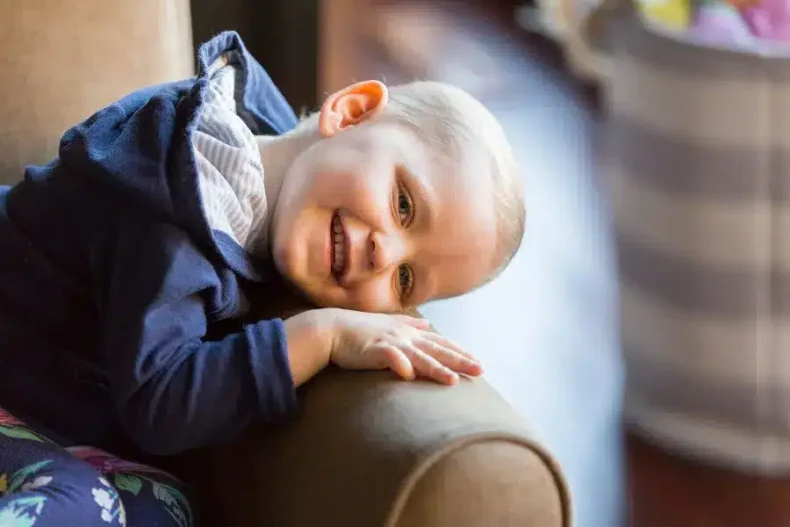In India, Blood cancer in children accounts for 20% of the global childhood cancer burden and it keeps on increasing.
Awareness of the signs and symptoms has become essential. Early diagnosis and treatment at an early stage can save a child’s life.
10-year-old teen actor Rahul Koli passes away. He was suffering from leukemia when he died on October 2, before the release of his film Chhellow Show, India’s official entry to the Oscars.
Childhood leukemia or blood cancer is most commonly found in teenagers and kids all over the world. The treatment and the diagnosis at the right time are significant and decide the fate of one’s health. While treatment of cancer in children is more receptive as compared to adults.
A. HOW DOES IT AFFECT YOUR BODY?

leukemia is a type of cancer that affects the white blood cells of the body which are responsible for fighting against infection and diseases. White blood cells act as a pillar of the body’s immune system.
When the white cells get affected, abnormal white cells(leukocytes)are formed in the bone marrow that gets infused in the blood and reach the other parts of the body, influencing the healthy cells too.
When these healthy cells turn abnormal, the body’s chances of catching infections and diseases increase and it gets weaker over time.
B. Types of Leukemia
There are three main types of leukemia that are categorized according to the speed at which they develop and the kind of white blood cells they involve.
- Acute lymphocytic leukemia (ALL)sudden − coming on in days or weeks.
It is also called lymphoblastic or lymphoid leukemia.
- Acute myeloid leukemia (AML) is gradual − coming on over months or years.
It is also called myelogenous, granulocytic, myelocytic, my, myeloid, or myeloblastic leukemia
- Chronic myeloblastic leukemia (CML)
Treatment of acute leukemia should be started urgently with the purpose to destroy leukemic cells in the body as much as possible. With treatment, the signs and symptoms of leukemia will go away as much as possible, this phase is called remission.
C. SIGNS AND SYMPTOMS OF BLOOD CANCER IN KIDS
Children generally don’t have any typical risk factors unless their immunity is strong and there is no such existing disease they are fighting.
The risk of cancer in kids increases based on the infected genes. The chances of getting blood cancer in kids increase if there is already someone in their family who is suffering or has suffered in past from blood cancer. This is called Li-Fraumeni Syndrome which means ‘hereditary cancer predisposition’.
- Frequent infections and fever:
This is the most common symptom of low immunity in both kids and adults. Regular infections and fevers that are not curable through common medicines and multiple visits to a doctor should be checked immediately. If you are frequently encountering fever and are disturbed to see that nothing making changes and your child is still not feeling better, it’s time to seek more medical attention.
- Abnormal Bleeding: if you find your child bleeding every time whenever he/ she jumps into something or just trips while playing, it could be a sign of a bigger problem.
- Excessive fatigue:
If you are noticing your children
feeling tired all the time could be a sign of an extremely low immune system. That’s unexplained fatigue and should be checked.
- other symptoms:
Some other symptoms include-
- Coughing or trouble breathing
- Swollen lymph nodes
- Swelling of abdomen
- Joint pain
D. Treatment for Leukemia
Treatment of leukemia depends upon your child’s health and associated risk. There are several factors through which treatment is being given.
- child’s age
- child’s overall health and medical history
- Genetics
- type of leukemia
- toleration level of the child during treatment
- Stage of cancer
- How the disease is expected to progress

Common treatments that are used to fight leukemia include:
- Chemotherapy. Chemotherapy is the major form of treatment for leukemia. It is a type of drug used for the treatment of chemicals to kill leukemic cells.
- Radiation therapy
Radiation therapy is therapies such as X-rays or other high-energy beams. These are used to damage leukemia cells and stop their growth through radiation.
3. Bone marrow transplant
A bone marrow transplant is also called a stem cell transplant. It helps in reestablishing healthy stem cells. By replacing unhealthy bone marrow with leukemia-free stem cells, the regeneration of healthy bone marrow will take place.
4. Immunotherapy
The prevention or treatment of disease with substances stimulates the immune response.
Immunotherapy uses your immune system to fight against cancer. Immunotherapy or biological therapy treats disease by activating or suppressing the immune system. Your child’s immune system may not attack cancer cells because these cells produce proteins that help them to hide from the immune system cells.
Read more : Midnight’s album by Taylor Swift is more than just Album.













